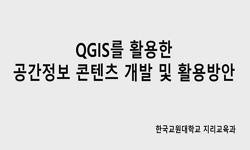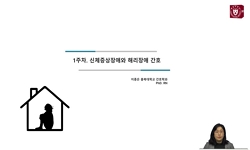Background: Since 2003, Korea has consistently shown the highest suicide rate among the Organization for Economic Cooperation and Development countries, and suicide remains the major cause of death. In particular, men are 2–3 times more likely to co...
http://chineseinput.net/에서 pinyin(병음)방식으로 중국어를 변환할 수 있습니다.
변환된 중국어를 복사하여 사용하시면 됩니다.
- 中文 을 입력하시려면 zhongwen을 입력하시고 space를누르시면됩니다.
- 北京 을 입력하시려면 beijing을 입력하시고 space를 누르시면 됩니다.

남성 자살률의 공간 군집패턴 변화와 지역특성요인의 관계 분석 = A Study on the Relationship between the Spatial Cluster Patterns of Male Suicide Rate and the Regional Characteristics in South Korea
한글로보기https://www.riss.kr/link?id=A106371976
- 저자
- 발행기관
- 학술지명
- 권호사항
-
발행연도
2019
-
작성언어
Korean
- 주제어
-
등재정보
KCI등재
-
자료형태
학술저널
- 발행기관 URL
-
수록면
312-322(11쪽)
-
KCI 피인용횟수
1
- DOI식별코드
- 제공처
-
0
상세조회 -
0
다운로드
부가정보
다국어 초록 (Multilingual Abstract)
Background: Since 2003, Korea has consistently shown the highest suicide rate among the Organization for Economic Cooperation and Development countries, and suicide remains the major cause of death. In particular, men are 2–3 times more likely to commit suicide than women, which called the ‘gender paradox of suicide.’ The areas with frequent suicide have spatially clustered patterns because suicide with a social contagion spreads around the neighborhood. The purpose of this study was twofold. The first was to estimate the hotspot areas of age-standardized male suicide mortality from 2008 to 2015. The second was to analyze the relationship between the hotspot areas and the regional characteristics for study years.
Methods: The data was collected through the Korean Statistical Information Service. The study areas were 227 si · gun · gu administrative districts in Korea. The hotspot area was used as a dependent variable. Socio-demographic variables (number of marriages per 1,000 population, number of divorces per 1,000 population, and urbanization rate), financial variables (financial independence and social security budget), and health behaviors (EuroQol-5 dimension [EQ-5D], and depression experience rate) were used as independents variables.
Results: The hotspot areas were commonly located in Gangwon-do, Chungcheongnam-do, Gyeongsangbuk-do, and Chungceongbuk-do. According to the results of panel logit regression, the number of divorces per 1,000 population, social security budget, and EQ-5D were statistically significant variables.
Conclusion: The results of hotspot analysis showed the need for establishing a prevention zone of suicide using hotspot areas. Also, medical resources could be considered to be preferentially placed in the prevention zone of suicide. This study could be used as basic data for health policymakers to establish a suicide-related policy.
참고문헌 (Reference)
1 이진희, "지역적 건강불평등과 개인 및 지역수준의 건강결정요인" 한국보건사회연구원 36 (36): 345-384, 2016
2 김재원, "지역별 고용불안정이 청년 자살률에 미치는 영향" 한국사회보장학회 30 (30): 117-141, 2014
3 박일주, "지방자치단체 특성이 지역 자살률에 미치는 영향: 민선 5기 기초자치단체들을 중심으로" 한국행정연구소 55 (55): 333-370, 2017
4 박선주, "정신건강증진센터 탈원화정책의 경로의존성에 관한 연구" 한국정신건강사회복지학회 45 (45): 90-115, 2017
5 이덕인, "자살사건의 실증적 분석과 자살예방정책을 위한 제언 - 부산광역시 사례를 중심으로 -" 법학연구소 54 (54): 1-38, 2013
6 강상경, "우울이 자살을 예측하는가? : 우울과 자살태도 관계의 성별·연령 차이" 한국사회복지연구회 41 (41): 67-100, 2010
7 윤우석, "사회적 통합과 자살률의 관계 검증 : 시군구 자료를 중심으로" 한국공안행정학회 20 (20): 143-174, 2011
8 김상원, "사회적 지원과 일탈: 지역단위의 사회적 지원이 자살률에 미치는 영향" 한국지방정부학회 14 (14): 81-95, 2010
9 김지연, "사회자본과 지역인구사회학적 특성이 지역 자살률에 미치는 영향: 서울시 자치구별 패널자료를 중심으로" 한국보건사회학회 (41) : 33-60, 2016
10 이상일, "공간 클러스터의 범역 설정을 위한 GIS-기반 방법론 연구 -수정 AMOEBA 기법-" 대한지리학회 45 (45): 502-520, 2010
1 이진희, "지역적 건강불평등과 개인 및 지역수준의 건강결정요인" 한국보건사회연구원 36 (36): 345-384, 2016
2 김재원, "지역별 고용불안정이 청년 자살률에 미치는 영향" 한국사회보장학회 30 (30): 117-141, 2014
3 박일주, "지방자치단체 특성이 지역 자살률에 미치는 영향: 민선 5기 기초자치단체들을 중심으로" 한국행정연구소 55 (55): 333-370, 2017
4 박선주, "정신건강증진센터 탈원화정책의 경로의존성에 관한 연구" 한국정신건강사회복지학회 45 (45): 90-115, 2017
5 이덕인, "자살사건의 실증적 분석과 자살예방정책을 위한 제언 - 부산광역시 사례를 중심으로 -" 법학연구소 54 (54): 1-38, 2013
6 강상경, "우울이 자살을 예측하는가? : 우울과 자살태도 관계의 성별·연령 차이" 한국사회복지연구회 41 (41): 67-100, 2010
7 윤우석, "사회적 통합과 자살률의 관계 검증 : 시군구 자료를 중심으로" 한국공안행정학회 20 (20): 143-174, 2011
8 김상원, "사회적 지원과 일탈: 지역단위의 사회적 지원이 자살률에 미치는 영향" 한국지방정부학회 14 (14): 81-95, 2010
9 김지연, "사회자본과 지역인구사회학적 특성이 지역 자살률에 미치는 영향: 서울시 자치구별 패널자료를 중심으로" 한국보건사회학회 (41) : 33-60, 2016
10 이상일, "공간 클러스터의 범역 설정을 위한 GIS-기반 방법론 연구 -수정 AMOEBA 기법-" 대한지리학회 45 (45): 502-520, 2010
11 George E Murphy, "Why women are less likely than men to commit suicide" Elsevier BV 39 (39): 165-175, 1998
12 Paul S.F. Yip, "Urban/rural and gender differentials in suicide rates: East and West" Elsevier BV 57 (57): 99-106, 2000
13 Alex Braithwaite, "Transnational Terrorism Hot Spots: Identification and Impact Evaluation" SAGE Publications 24 (24): 281-296, 2016
14 Matsubayashi T, "The effect of national suicide prevention programs on suicide rates in 21 OECD nations" 73 (73): 1395-1400, 2011
15 DAVID H. REHKOPF, "The association between suicide and the socio-economic characteristics of geographical areas: a systematic review" Cambridge University Press (CUP) 36 (36): 145-157, 2006
16 Arthur Getis, "The Analysis of Spatial Association by Use of Distance Statistics" Wiley 24 (24): 189-206, 1992
17 Maria Cecília de Souza Minayo, "Suicídio entre pessoas idosas: revisão da literatura" FapUNIFESP (SciELO) 44 (44): 750-757, 2010
18 Durkheim E, "Suicide: a study in Sociology" Chunga Book 2008
19 Seo DW, "Status of suicide rate in Korea and the role of mental health center" 2003
20 Park JW, "Socioeconomic inequalities in health at the regional level in Korea" (260) : 7-19, 2018
21 Min IS, "STATA panel data analysis version 15" Jiphil Media 2018
22 Kapusta ND, "Rural-urban differences in Austrian suicides" 43 (43): 311-318, 2008
23 Park BC, "Rural and urban suicide in South Korea" 111 (111): 495-497, 2012
24 Yeates Conwell, "Risk factors for suicide in later life" Elsevier BV 52 (52): 193-204, 2002
25 Chun JA, "Recent changes in mental health policy in Korea" (246) : 51-63, 2017
26 Organization for Economic Cooperation and Development, "Making mental health count: the social and economic costs of neglecting mental health care" Organization for Economic Cooperation and Development 2014
27 J. K. Ord, "Local Spatial Autocorrelation Statistics: Distributional Issues and an Application" Wiley 27 (27): 286-306, 1995
28 ESRI, "Hot spot analysis (Getis-Ord Gi*)" ESRI
29 Organization for Economic Cooperation and Development, "Health status: suicide rates (indicator)" Organization for Economic Cooperation and Development
30 김명진, "Getis-Ord’s Gi와 FLQ를 이용한 공간 집적 분석: 경기도 지식기반산업을 대상으로" 한국지도학회 14 (14): 107-123, 2014
31 Siegrist J, "Employment arrangements, work conditions and health inequalities:report on new evidence on health inequality reduction, produced by task group 2 for the strategic review of health inequalities post 2010" Centre for Analysis of Social Exclusion 2010
32 D. J Exeter, "Does young adult suicide cluster geographically in Scotland?" BMJ 61 (61): 731-736, 2007
33 Yutaka Motohashi, "Community-based suicide prevention program in Japan using a health promotion approach" Springer Science and Business Media LLC 9 (9): 3-8, 2004
34 Han CS, "A study on the regional risk factors on the elderly suicide" National Evidence-based Healthcare Collaborating Agency 2012
35 Goldney RD, "A novel integrated knowledge explanation of factors leading to suicide" 21 (21): 141-146, 2003
동일학술지(권/호) 다른 논문
-
공공의료서비스 제공의 공평성이 주관적 건강행복에 미치는 영향: 공공의료서비스 질의 매개효과
- 한국보건행정학회
- 문승민
- 2019
- KCI등재
-
- 한국보건행정학회
- 김재현
- 2019
- KCI등재
-
- 한국보건행정학회
- 오영호
- 2019
- KCI등재
-
우리나라의 건강수요 및 의료수요에 대한 분석: Grossman Model을 중심으로
- 한국보건행정학회
- 황용하
- 2019
- KCI등재
분석정보
인용정보 인용지수 설명보기
학술지 이력
| 연월일 | 이력구분 | 이력상세 | 등재구분 |
|---|---|---|---|
| 2027 | 평가예정 | 재인증평가 신청대상 (재인증) | |
| 2021-01-01 | 평가 | 등재학술지 유지 (재인증) |  |
| 2018-01-01 | 평가 | 등재학술지 유지 (등재유지) |  |
| 2015-01-01 | 평가 | 등재학술지 유지 (등재유지) |  |
| 2013-03-11 | 학회명변경 | 영문명 : The Korean Society Of Health Policy And Administration -> Korean Academy of Health Policy and Management |  |
| 2013-03-11 | 학술지명변경 | 외국어명 : Korean Journal of Health Policy and Administration -> Health Policy and Mangemnet |  |
| 2011-01-01 | 평가 | 등재학술지 유지 (등재유지) |  |
| 2009-01-01 | 평가 | 등재학술지 유지 (등재유지) |  |
| 2007-01-01 | 평가 | 등재학술지 유지 (등재유지) |  |
| 2004-01-01 | 평가 | 등재학술지 선정 (등재후보2차) |  |
| 2003-01-01 | 평가 | 등재후보 1차 PASS (등재후보1차) |  |
| 2002-01-01 | 평가 | 등재후보학술지 유지 (등재후보1차) |  |
| 1999-07-01 | 평가 | 등재후보학술지 선정 (신규평가) |  |
학술지 인용정보
| 기준연도 | WOS-KCI 통합IF(2년) | KCIF(2년) | KCIF(3년) |
|---|---|---|---|
| 2016 | 0.78 | 0.78 | 0.8 |
| KCIF(4년) | KCIF(5년) | 중심성지수(3년) | 즉시성지수 |
| 0.81 | 0.78 | 1.372 | 0.12 |




 ScienceON
ScienceON KISS
KISS




